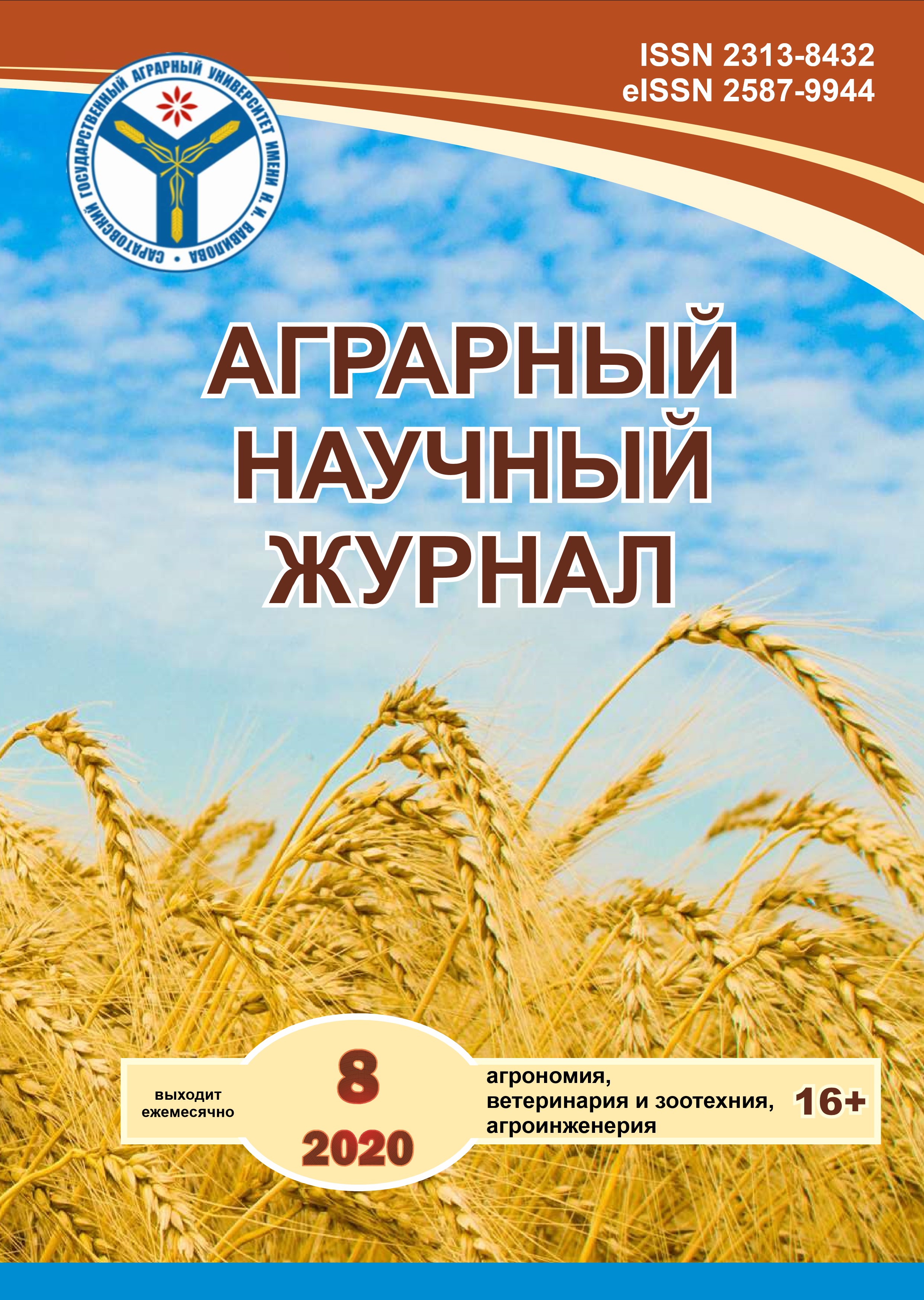Ways to improve cleaning technology and post-harvest processing of soybeans
DOI:
https://doi.org/10.28983/asj.y2020i8pp4-9Keywords:
soybeans, harvest, technical means, post-harvest refinementAbstract
The article discusses the main causes of soybean crop losses, which can reach 25–30%. Most often, a high cut of the harvester's header, significant crushing and injury during harvesting, and violation of the post-harvest processing technology lead to losses and a decrease in the quality of commercial grain and seeds. The purpose of the research was to assess the impact of various factors on the amount of crop losses and develop recommendations for optimizing technological operations during harvesting and post-harvest processing of soybeans, compliance with which will ensure the minimization of quantitative losses and quality indicators of the crop. For soybean harvesting, it is recommended to use combines with hybrid or rotary threshing systems, which ensure careful cleaning and minimize output losses. Combines are equipped with reapers with a flexible cutting device, which, given the uneven terrain, provide a cut height of 2.5 cm. Primary cleaning of the grain heap should be performed immediately with subsequent drying: commercial grain to a humidity of 7–12% at the heating temperature of the coolant no more than 60°C, seeds to a conditioned humidity of 14% at the heating temperature of the coolant 35–40°C.
Downloads
References
2. Белышкина М.Е. Проблема производства растительного белка и роль зерновых бобовых культур в ее решении // Природообустройство. – 2018. – № 2. – С. 65–73.
3. Возделывание сои в Ульяновской области (Практические рекомендации) / А.В. Дозоров [и др.]. – Ульяновск: УГСХА имени А.А. Столыпина, 2014. – С. 44–47.
4. Делаев У.А., Кобозева Т.П., Синеговская В.Т. Возделывание скороспелых сортов сои. – М.: ФГОУ ВПО МГАУ, 2011. – С. 131–134.
5. Ермолина О.В., Короткова О.В., Лысенко А.А. Организация первичного семеноводства сои // Зерновое хозяйство России. – 2015. – № 1. – С. 34–39.
6. Научно-практические основы возделывания сортов сои северного экотипа в Нечерноземной зоне России: учеб. пособие / Т.П. Кобозева [и др.]. – М.: ВНИИГиМ имени А.Н. Костякова, 2016. – С. 216–218.
7. Обоснование режима работы молотильно-сепарирующего устройства комбайна при уборке сои / А.М. Гиевский [и др.] // Вестник Воронежского государственного аграрного университета. – 2019. – Т. 12. – № 1 (60). – С. 50–56.
8. Перспективная ресурсосберегающая технология производства сои: метод. рекомендации. – М.: Росинформагротех, 2008. – С. 39–42.
9. Присяжная И.М., Синеговский М.О., Присяжная С.П. Совершенствование процесса уборки сои как способ повышения качества семян // Российская сельскохозяйственная наука. – 2019. – № 5. – С. 71–75.
10. Пути совершенствования технологии уборки зерновых культур и сои / М.В. Канделя [и др.] // Дальневосточный аграрный вестник. – 2019. – № 2 (50). – С. 98–109.
11. Шпилев Н.Б. Влияние десикации на посевные и биохимические качества семян и продуктивность сортов сои различных групп спелости // Дальневосточный аграрный вестник. – 2016. – № 2 (38). – С. 33–37.








